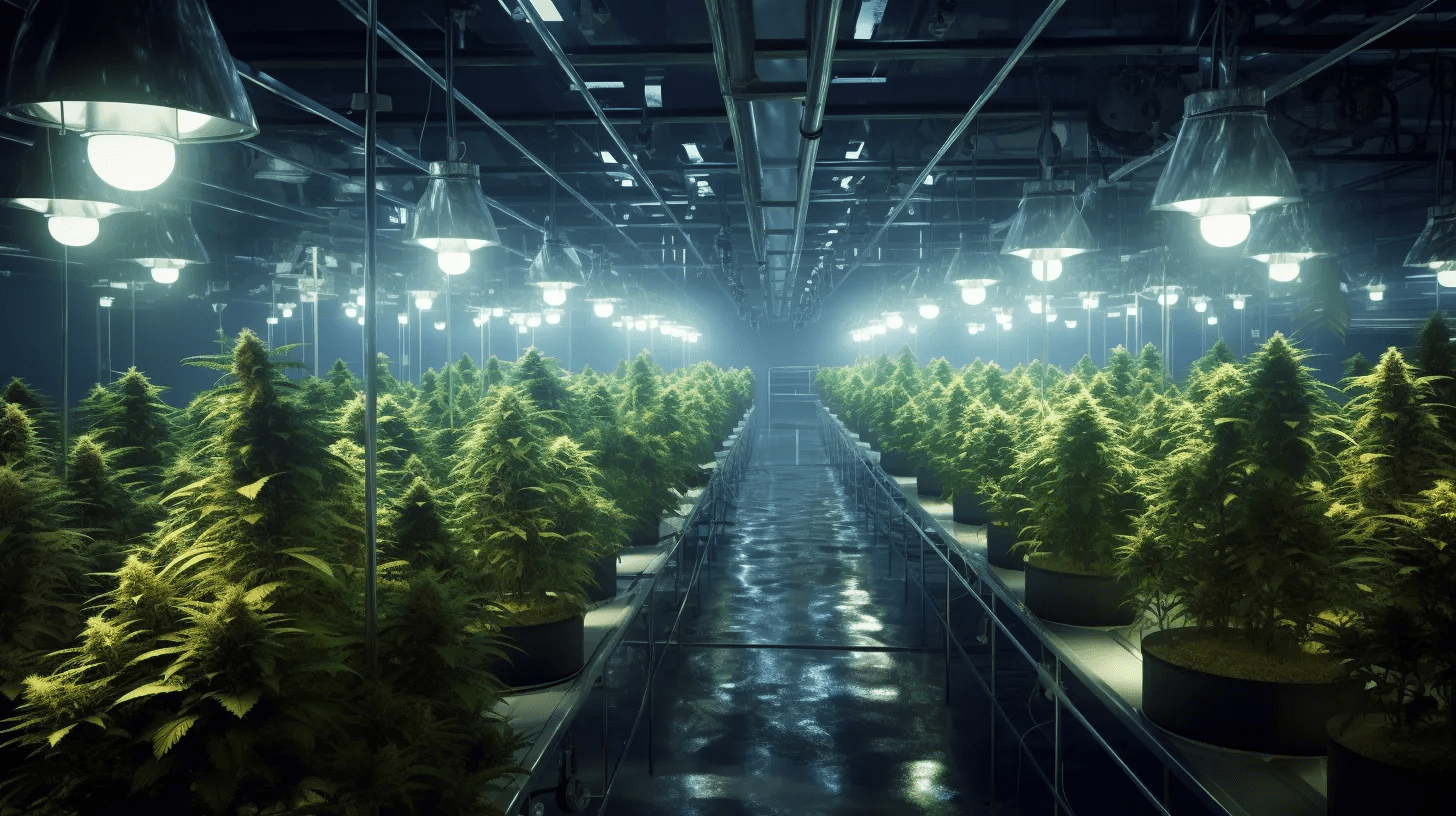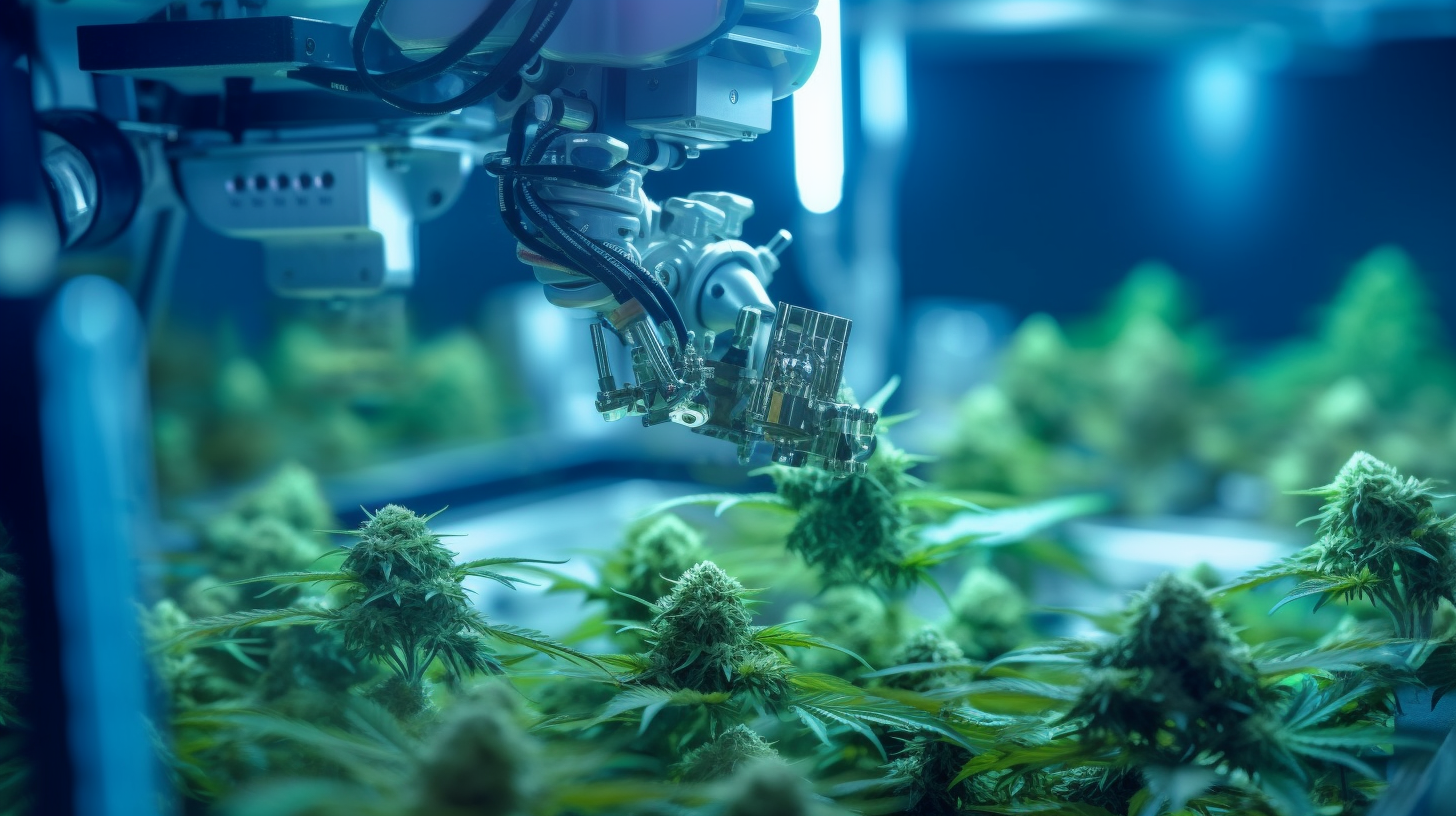The Intersection of Cannabis Cultivation and Industrial Automation: A New Era

Jun-24,2023 | Kerul Patel
The world of cannabis cultivation is experiencing a seismic shift. As the industry grows, so does the demand for more efficient and sophisticated cultivation methods. One of the key players in this revolution is industrial automation, a phenomenon that’s reshaping how we grow, harvest, and process cannabis. From automated watering and nutrient delivery systems to robotic trimming machines, the new era of cannabis cultivation is characterized by enhanced efficiency, improved yields, and overall, an unprecedented level of precision.
The Rise of Industrial Automation in Cannabis Cultivation
For years, cannabis cultivation largely remained a manual process. Caretakers would plant, water, feed, and harvest the plants by hand, requiring a significant amount of labor, time, and expertise. However, as the industry evolved and the demand for cannabis products soared, it became evident that more efficient methods of cultivation were needed. This is where industrial automation comes into play.
Automation, in essence, is the use of control systems and machinery to manage and carry out processes with minimal human intervention. In the world of cannabis cultivation, automation takes on many forms, each designed to streamline a particular aspect of the growing process.
The Different Forms of Automation in Cannabis Cultivation
One of the most prominent forms of automation in cannabis cultivation is automated irrigation and nutrient delivery systems. These systems can monitor the moisture levels in the soil and the nutrient needs of the plant, delivering water and nutrients as needed. This not only reduces the amount of labor required to maintain the plants but also ensures that each plant receives the precise amount of water and nutrients it needs to thrive, improving overall plant health and yield.
Another form of automation is automated trimming machines. Trimming is a time-consuming and labor-intensive process that involves removing the leaves and stems from the cannabis buds after harvest. Automated trimming machines can do this job quickly and efficiently, freeing up labor for other tasks and increasing overall productivity.
Planting and transplanting machines are yet another example of automation in cannabis cultivation. These machines can plant and transplant cannabis plants much faster than a human could, reducing the time it takes to get plants in the ground and increasing the overall growing season.
Finally, automated environmental control systems are a crucial part of modern cannabis cultivation. These systems can control everything from temperature and humidity to light levels and CO2 concentration, ensuring that the cannabis plants are always in the ideal growing conditions. This level of environmental control is almost impossible to achieve manually, making these systems a game-changer for cannabis cultivation.

The Benefits of Automation in Cannabis Cultivation
The benefits of automation in cannabis cultivation are manifold. First and foremost, automation significantly reduces the amount of labor required to grow cannabis. This not only reduces labor costs but also allows cultivators to scale their operations more effectively.
Second, automation can improve the consistency and quality of the cannabis crop. By automating various aspects of the cultivation process, growers can ensure that each plant is treated exactly the same, resulting in a more consistent product. Moreover, automation allows for a greater level of precision in cultivation, which can enhance the quality of the cannabis crop.
Third, automation can improve the efficiency and productivity of cannabis cultivation. Automated systems can perform tasks faster and more accurately than humans, reducing the time it takes to complete various cultivation tasks and increasing overall yield.
The Future of Cannabis Cultivation and Industrial Automation
The intersection of cannabis cultivation and industrial automation is just beginning to unfold. As the technology continues to advance, we can expect to see even more sophisticated and efficient automated systems in the world of cannabis cultivation.
Moreover, as the demand for cannabis products continues to grow, the need for more efficient cultivation methods will only increase. In this regard, industrial automation will play a crucial role in the future of the cannabis industry, enabling cultivators to meet growing demand.
Industrial automation in cannabis cultivation is poised to explore uncharted territories. The cannabis industry, growing at an extraordinary rate with expected sales growth of 14% over the next six years and reaching more than $30 billion annually, is set to harness the power of robotics and automation in innovative ways1.
Future Trajectories of Industrial Automation in Cannabis Cultivation
Industrial automation is steadily infiltrating diverse facets of cannabis cultivation and processing, with some notable areas of future development.
Chemical Analysis of Cannabis Products
The automation of chemical analysis of cannabis products is one promising direction. Companies like Hamilton Co., a specialist in liquid handling and sample management automation, are creating tools to make the chemical analysis of cannabis products simpler, faster, and more accurate. As cannabis production ramps up, the need for rapid and accurate chemical analysis increases, and automation will prove to be a major asset in this regard1.
Robotic Automation of Cannabis Extraction
The demand for cannabis products extends beyond just cannabis flowers. Consumers are increasingly interested in products containing THC, CBD, or a combination of the two. At smaller scales, manual extraction processes are feasible. However, when it comes to meeting larger demands, automated CO2 systems for cannabis extraction are the future. These scalable systems can be fully automated with the right hardware and can cater to state- or national-sized demands. Companies like Precision Extraction are already developing such systems, heralding a new era in cannabis extraction1.
Automated Weighing and Packing
New technology has allowed for the automation of the weighing and filling process in cannabis processing, a task traditionally done by hand. This not only frees up employees for other parts of the process that remain difficult to automate but also ensures consistently accurate package weighing and quality filling. As the industry evolves, we can expect more advancements in this field, further streamlining the process1.
Automating CBD Extraction
With the growing recognition of the value of CBD, one of the main psychoactive compounds found in cannabis plants, automating CBD extraction has become a focus. The process for extracting CBD is complex, and many producers still rely on small-batch methods. Recently, several companies have developed ethanol and CO2 extraction systems that can separate CBD from prepared cannabis, allowing companies to scale up the production and sale of CBD products1.
Partial Harvesting Automation
While full automation of the harvesting process remains a challenge, progress is being made in partial harvesting automation. Companies like Bloom Automation have developed collaborative robotics that can assist cannabis growers with large-scale harvesting. This represents a significant breakthrough in the field, though there’s still plenty of room for innovation and improvement1.
Conclusion
Right now, automation is key to cannabis production and processing, and in the future, it may become even more central to the sector. The potential for innovation in cannabis robotics is vast, with the promise of full harvest and processing automation on the horizon. This could drastically increase the efficiency of the industry and its ability to scale up existing operations1.
The intersection of cannabis cultivation and industrial automation represents a new era in the industry. It’s a development that promises to revolutionize the way we grow, process, and consume cannabis, improving efficiency, consistency, and quality along the way. As we move forward, we can expect to see even more advancements in this field, further reshaping the cannabis industry and setting new standards for cultivation.
